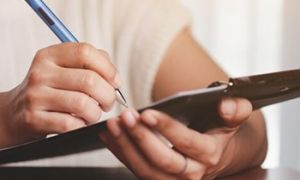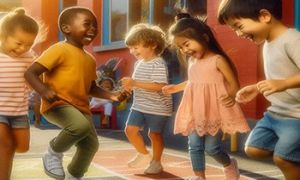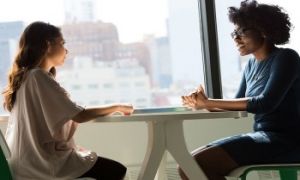The EYLF Learning Outcomes are broad and observable. They acknowledge that children learn in a variety of ways and vary in their capabilities and pace of learning. Children’s learning is ongoing acknowledge that children learn in a variety of ways. The following article provides practical examples of each individual learning outcome that children will progress towards in different and equally meaningful ways.
Outcome 1: Children have a strong sense of identity
1.1 Safety & Security
- Attachments
- Routines/transitions
- Belong
- Comfort/support
- Respect/trust
- Express feelings & ideas
- Initiate interactions
- Explore and engage
- Play
- Explore identity through role play
1.2 Emerging autonomy, inter-dependence, resilience & a sense of agency
- Awareness of the rights and needs of others
- Awareness of the rights and needs of others
- Open to challenges
- Cooperate/work collaboratively
- Take risks
- Cope with the unexpected
- Recognise own unexpected
- Recognise other's achievements
- Self-regulate
- Confidence
- Being sharing behaviours
- Persist
3.3 Develop knowledgeable and confident self-identities
- Accepted for who they are
- Explore identities through dramatic play
- Share Culture
- Use home language
- Develop a social and cultural heritage
- Engage with Elders & community members
- Companionship
- Celebrate
3.4 Interact with care, empathy and respect towards others
- Show interest in others
- Be part of a group
- Share play experiences
- Express emotions constructively
- Empathise with others
- Express concern for others
- Be aware of their perspectives
- Respect other's perspectives
- Reflect on your own actions
- Consider consequences
Outcome 2: Children are connected to and contribute to their world
2.1 Sense of belong to groups & communities, reciprocal rights & responsibilities
- Right to Belong
- Cooperate with others
- Negotiate roles in the play
- Participate in social groups
- Understanding of the world
- Express opinions
- Explore other's ways of being
- Reciprocal relationships “read" the behaviours of others
- Respond appropriately
- Contribute in different ways
- Sense of belonging
- Be playful
- Respond positively to other
- Contribute to fair decision making
2.2 Respond to diversity with respect
- Show concern for others.
- Explore diversity
- Become aware of connections
- Similarities & differences
- Listen to others' ideas
- Respect different ways of doing
- Practice inclusive ways
2.3 Become aware of fairness
- Explore connections among people
- Be aware of ways people are included/excluded
- Recognise unfairness & bias
- Act with compassion & kindness
- Make choices/problem solve
- Think critically about fair/unfair behaviour
- Understand how texts construct identities & create stereotypes
2.4 Become socially responsible & show respect for the environment
- Play news ideas
- Participate to solve problems
- Contribute to group outcomes
- Know, respect, care appreciate natural environments
- Know, respect, care appreciate constructed environments
- Explore, inter, predict & hypothesise/ interdependence land, people, plants & animals
- Relationships - living & non-living
- Notice & respond to the charge
- Awareness of the impact of human activity
- Interdependence of living things
Outcome 3: children have a strong sense of wellbeing
3.1 Strength in Social and Emotional Wellbeing
- Trust/confidence
- Share humour, happiness & satisfaction
- Be comforted by others during distress, confusion, challenges
- Make new discoveries
- Celebrate own effort
- Celebrate the efforts of others
- Cooperate & work collaboratively
- Enjoy solitude
- Recognise own achievements
- Make choice
- Accept challenges
- Take considered risk
- Manage change
- Cope with frustrations
- Cope with the unexpected
- Understand one emotion
- Self-regulate
- Manage emotions
- Experience & share personal successes
- Acknowledge & accept affirmations
- Assets own capabilities and independence
- Be aware of the needs and rights of others
- Recognise contributions to shared projects
3.2 Take responsibility for own health & wellbeing
- Recognise & communicate bodily needs.
- Happy, healthy, safe & connected to others
- Sensory motor skills
- Movement patterns
- Gross & fine motor
- Balance
- Spatial equipment
- Manage tools
- Respond through movements
- Healthy lifestyles
- Good nutrition
- Personal hygiene
- Own safety & safety of others
- Physical play
- Negotiate play spaces safety
Outcome 4: Children are confident & involved learners
4.1 Learning dispositions such as curiosity, cooperation, creativity, commitment, enthusiasm, persistence, imagination, reflectivity
- Express wonder/interest
- Curious, enthusiastic participants
- Investigate, imagine and explore ideas through play
- Follow on and extend your own interests
- Initiate and contribute to play experiences
- Participate in inquiry-based experiences
- Persevere & persist with difficult tasks
- Experience satisfaction
4.2 Develop problem-solving, inquiry, experimentation, hypothesising, researching, and investigating
- Apply thinking strategies
- Engage with solutions
- Adapt strategies
- Create & use representation
- Use mathematical ideas, concepts, language, and symbols
- Make predictions & generalisations
- Cause & effect
- Trail & error
- Motion
- Reflective thinking
4.3 Transfer & adapt learning from one context to another
- Co-construct learning
- Mirror, respect and practise the actions of others
- Make connections
- Use the process of play, reflection & Investigation
- Apply generalisations
- Transfer knowledge
4.4 Connect with people, places, technologies and natural & processes materials
- Engage in learning relationships
- Use senses
- Sharing learning, exploration
- Explore tools, media, sounds, and graphics
- Take apart, assemble, invent, construct
- Experiment with different technologies
- Use information and communication technologies
- Use information and communication technologies (ICT)
- Imagination, creativity & play
- Use feedback to revise and build on an idea
Outcome 5: Children are effective communications
5.1 Interact verbally & non-verbally
- Enjoy interactions
- Convey & construct messages
- Use language & representations
- Play, music, art
- Give cultural cues
- Independent Communicators - Australian Standard English & home language
- Meet listeners' needs
- Build on home/family community literacies
- Measurements & number
- Use vocabulary to describe size, length, volume, capacity, & names of numbers
- Express ideas & feelings
- Communicate thinking about quantities
- Describe attributes of products
- Explain mathematical ideas
- Convey meaning in at least one language
5.2 Engage with and gain meaning from a range of texts
- Listen/respond to sounds & patterns
- View/listen/respond to multimedia texts
- Sing/chant rhymes, jingles & songs
- Be literacy/numeracy users in play
- Sound of language, letter-sound relationship, the concept of print, the structure of texts
- Analyse the meaning of texts
- Share the enjoyment of language
- Recognise/engage with written & oral culturally constructed texts.
5.3 Express ideas and make meaning using a range of media
- Engage in play Imagine, and create role, scripts & ideas
- Share stories & symbols of your own culture
- Re-enact well-known stories
- Use creative arts - drawing, painting, sculpture, drama, music & storytelling.
- Experiment with a range of media
5.4 Being to understand how symbol & pattern systems work
- Use symbols in play
- Make connections & see patterns
- Predict patterns in routine/passing of time
- Symbols as a means to communicate
- Relationships between oral. Written & visual representations
- Recognise patterns
- Sort, categorise, order & compare
- Listen/respond to sounds/patterns in speech/stories, rhyme
- Dare on the memory of a sequence to complete a task
- Being to use images & approximations of letters/words
- Use symbols for meaning
5.5 Use information technologies to access information, investigate ideas represent thinking
- Identify the use of technologies
- Use real or imaginary technologies in play
- Use ICT to access images & information
- Use ICT to explore diverse perspectives
- Use ICT to make sense of the world
- Use ICT for designs, drawing editing, reflecting, composing
- Engage with technology to make meaning
Further Reading
Free EYLF Version 2.0 Posters and Cheat Sheets - The following provides a list of cheat sheets and free printables based on EYLF Outcomes Version 2.0. These can be used as a reference point for Educators. They can also be used to refer to when documenting and planning.


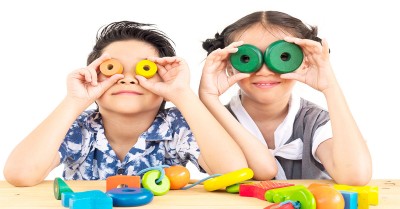



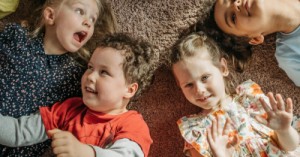
 Here is the list of the EYLF Learning Outcomes that you can use as a guide or reference for your documentation and planning. The EYLF
Here is the list of the EYLF Learning Outcomes that you can use as a guide or reference for your documentation and planning. The EYLF The EYLF is a guide which consists of Principles, Practices and 5 main Learning Outcomes along with each of their sub outcomes, based on identity,
The EYLF is a guide which consists of Principles, Practices and 5 main Learning Outcomes along with each of their sub outcomes, based on identity, This is a guide on How to Write a Learning Story. It provides information on What Is A Learning Story, Writing A Learning Story, Sample
This is a guide on How to Write a Learning Story. It provides information on What Is A Learning Story, Writing A Learning Story, Sample One of the most important types of documentation methods that educators needs to be familiar with are “observations”. Observations are crucial for all early childhood
One of the most important types of documentation methods that educators needs to be familiar with are “observations”. Observations are crucial for all early childhood To support children achieve learning outcomes from the EYLF Framework, the following list gives educators examples of how to promote children's learning in each individual
To support children achieve learning outcomes from the EYLF Framework, the following list gives educators examples of how to promote children's learning in each individual Reflective practice is learning from everyday situations and issues and concerns that arise which form part of our daily routine while working in an early
Reflective practice is learning from everyday situations and issues and concerns that arise which form part of our daily routine while working in an early Within Australia, Programming and Planning is reflected and supported by the Early Years Learning Framework. Educators within early childhood settings, use the EYLF to guide
Within Australia, Programming and Planning is reflected and supported by the Early Years Learning Framework. Educators within early childhood settings, use the EYLF to guide When observing children, it's important that we use a range of different observation methods from running records, learning stories to photographs and work samples. Using
When observing children, it's important that we use a range of different observation methods from running records, learning stories to photographs and work samples. Using This is a guide for educators on what to observe under each sub learning outcome from the EYLF Framework, when a child is engaged in
This is a guide for educators on what to observe under each sub learning outcome from the EYLF Framework, when a child is engaged in The Early Years Learning Framework describes the curriculum as “all the interactions, experiences, activities, routines and events, planned and unplanned, that occur in an environment
The Early Years Learning Framework describes the curriculum as “all the interactions, experiences, activities, routines and events, planned and unplanned, that occur in an environment